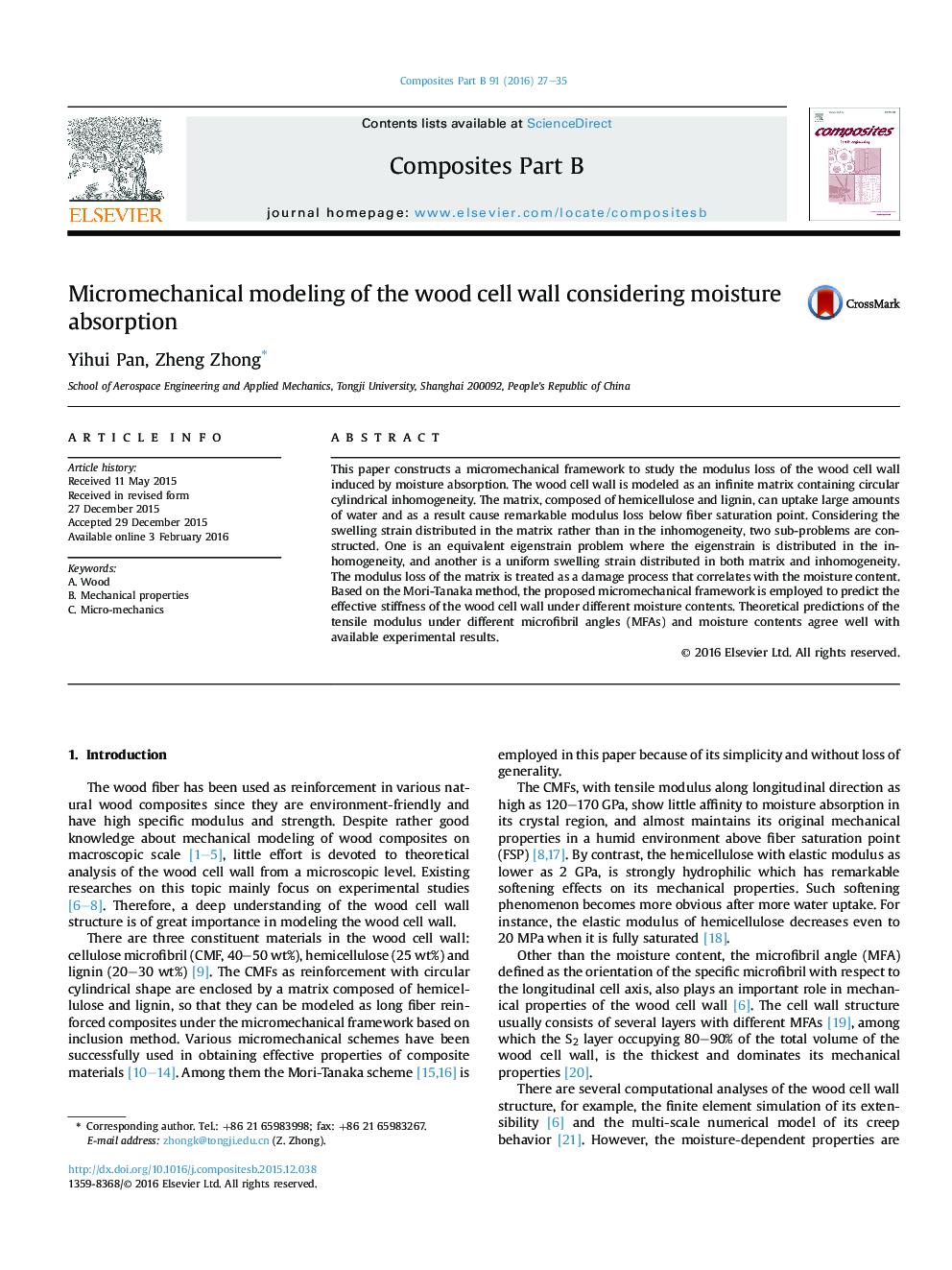| Article ID | Journal | Published Year | Pages | File Type |
|---|---|---|---|---|
| 7212724 | Composites Part B: Engineering | 2016 | 9 Pages |
Abstract
This paper constructs a micromechanical framework to study the modulus loss of the wood cell wall induced by moisture absorption. The wood cell wall is modeled as an infinite matrix containing circular cylindrical inhomogeneity. The matrix, composed of hemicellulose and lignin, can uptake large amounts of water and as a result cause remarkable modulus loss below fiber saturation point. Considering the swelling strain distributed in the matrix rather than in the inhomogeneity, two sub-problems are constructed. One is an equivalent eigenstrain problem where the eigenstrain is distributed in the inhomogeneity, and another is a uniform swelling strain distributed in both matrix and inhomogeneity. The modulus loss of the matrix is treated as a damage process that correlates with the moisture content. Based on the Mori-Tanaka method, the proposed micromechanical framework is employed to predict the effective stiffness of the wood cell wall under different moisture contents. Theoretical predictions of the tensile modulus under different microfibril angles (MFAs) and moisture contents agree well with available experimental results.
Related Topics
Physical Sciences and Engineering
Engineering
Engineering (General)
Authors
Yihui Pan, Zheng Zhong,
